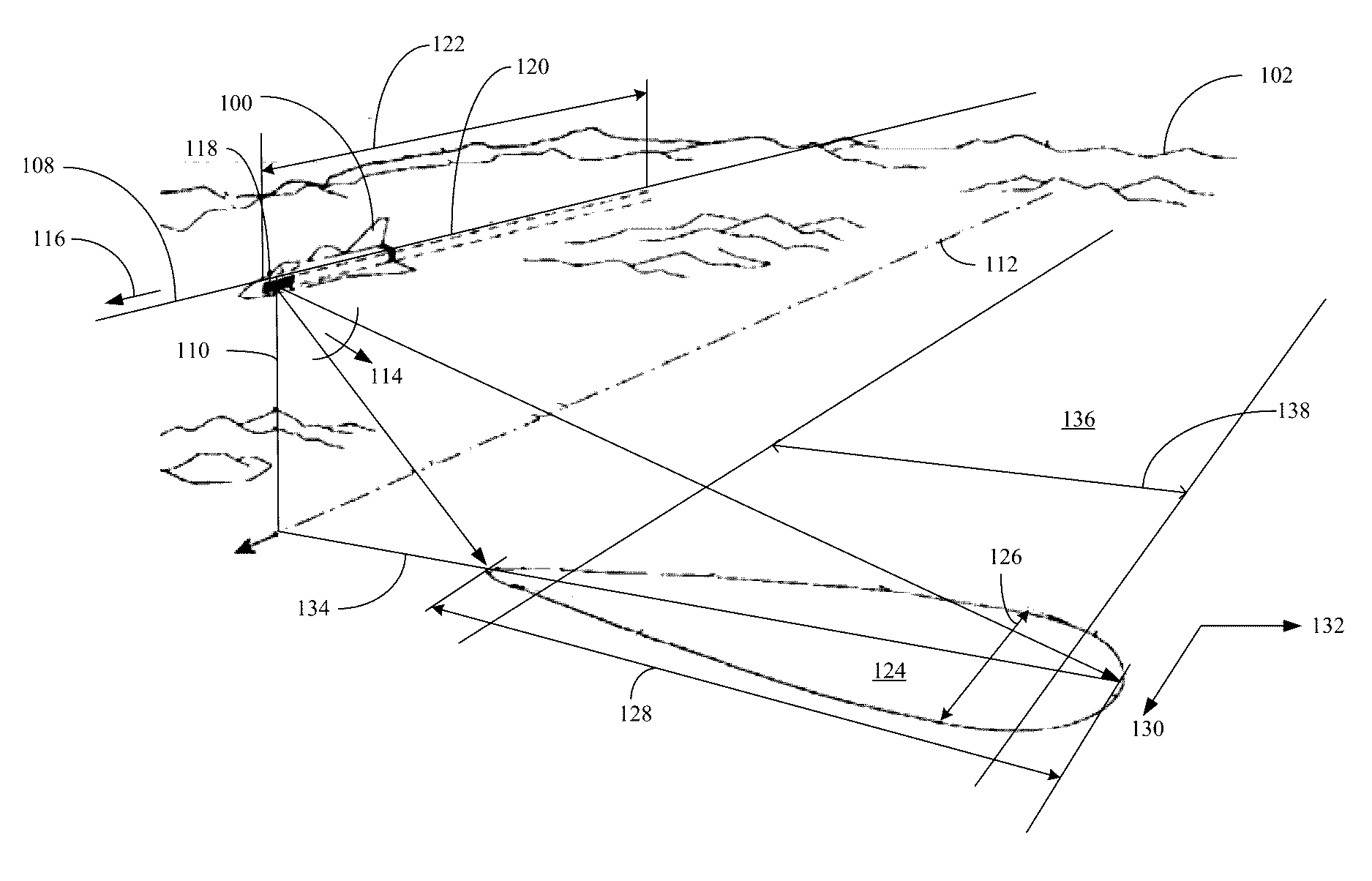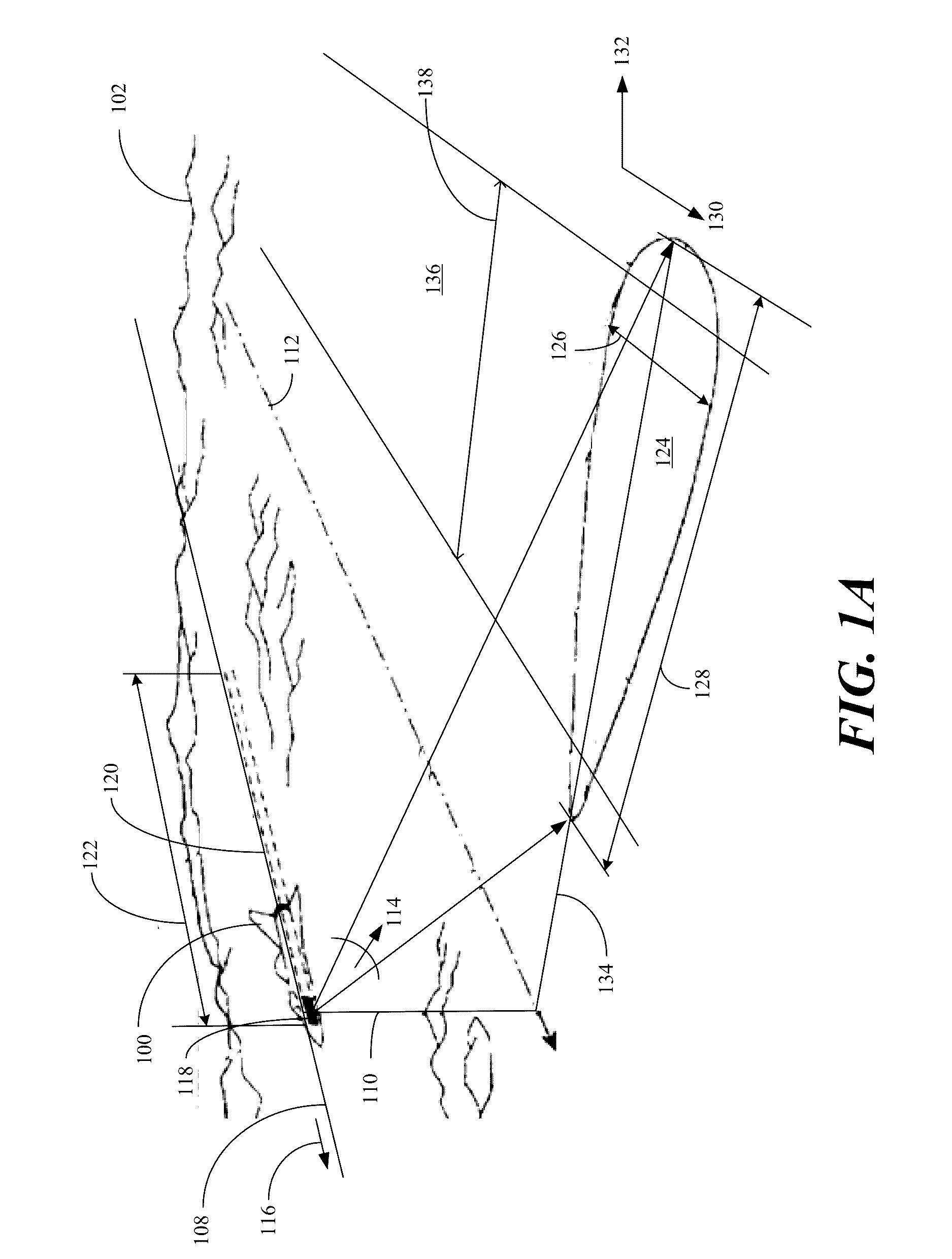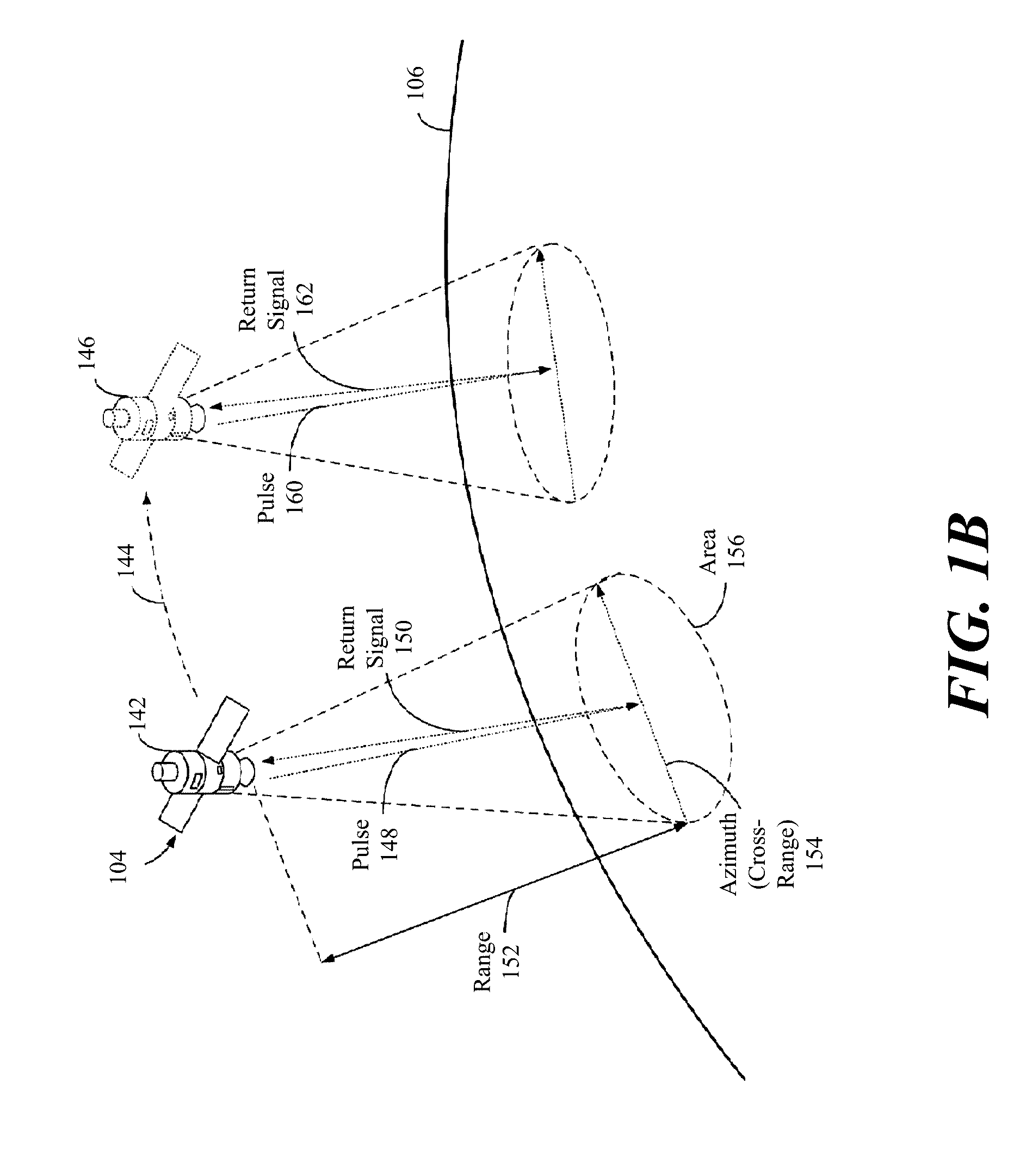Phase calibration of a stepped-chirp signal for a synthetic aperture radar
a synthetic aperture radar and phase calibration technology, applied in the field of radar systems, can solve the problems of increasing the bandwidth of transmitted signals beyond certain points, poor azimuth resolution of the target area formed by the slar, and difficult to physically implement in reality
- Summary
- Abstract
- Description
- Claims
- Application Information
AI Technical Summary
Benefits of technology
Problems solved by technology
Method used
Image
Examples
Embodiment Construction
[0050]Disclosed is a Radar Calibration Processor (“RCP”) for calibrating the phase of a stepped-chirp signal utilized by a synthetic aperture radar (“SAR”). The RCP includes a periodic phase error (“PPE”) calibrator, first non-periodic phase error (“NPPE”) calibrator in signal communication with the PPE calibrator, and a second NPPE calibrator in signal communication with the first NPPE calibrator.
[0051]In an example of operation, the RCP preforms a method that calibrates the phase of the stepped-chirp signal by receiving SAR image data from an acquired radar target area that was scanned with a SAR utilizing a plurality of stepped-chirp signals and calibrating the phases of the stepped-chirp signals. The calibration of the phase is performed by estimating the phase errors in the stepped-chirp signals. The RCP performs this method by sequentially first calibrating the SAR image data with the PPE calibrator to remove periodic phase errors in the SAR image data. The RCP then calibrates...
PUM
 Login to View More
Login to View More Abstract
Description
Claims
Application Information
 Login to View More
Login to View More - R&D
- Intellectual Property
- Life Sciences
- Materials
- Tech Scout
- Unparalleled Data Quality
- Higher Quality Content
- 60% Fewer Hallucinations
Browse by: Latest US Patents, China's latest patents, Technical Efficacy Thesaurus, Application Domain, Technology Topic, Popular Technical Reports.
© 2025 PatSnap. All rights reserved.Legal|Privacy policy|Modern Slavery Act Transparency Statement|Sitemap|About US| Contact US: help@patsnap.com



